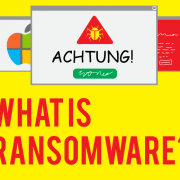What Is the IPv6 Switch Going to Mean for Canadian Businesses?
If you haven’t heard already, the internet has finally gotten a little too big for it’s britches, so to speak. Indeed, the Internet Assigned Numbers Authority (or IANA) is getting down to the final number of addresses left under the old system, which is called IPv4. In fact, we have now been told that the last address will be used up by the first of July! However, fear not, for there is a new system that will be slowly replacing IPv4 called IPv6 which will, once fully implemented, allow for an exponentially larger number of addresses.
So, first off, what is this going to mean for businesses world wide? Well, it is important to keep in mind just how crucial an IP address is in the first place. After all, we all take for granted that we get assigned one every time we create an account with an ISP, but if you didn’t have one, or the one you had ceased to function properly, you could find yourself unable to communicate with your clients, suppliers or anyone else, which would, of course, be disastrous for any business. So, obviously, anything that has the potential to disrupt this all important channel of communication is cause for concern.

For this reason it is important to realize that in order to keep up with other businesses it is imperative that you get an IPv6 address as soon as possible. It will eventually be the new standard, and you don’t want to get left behind. And, the most crucial element to making sure that you stay ahead of the curve is not that IPv6 is faster, or that IPv4 addresses won’t work anymore once IPv6 becomes more popular, it is that as IPv4 addresses eventually become more and more scarce there is the very real risk of errors and vulnerabilities that may arise as information is passed between the two different types of addressing systems. Indeed, as the transition comes about, you could find yourself in a situation where other businesses and suppliers become harder to connect with. Antiquated software programs may have difficulty communicating between the two networks, with internet troublemakers potentially enjoying a field day as they easily exploit these new vulnerabilities. While these may sound like doomsday predictions, they are a very real danger that does indeed potentially loom up ahead.
What does this mean for the Canadian business community in particular? Well, as in all nations, planning ahead and switching over as soon as possible should be of the utmost priority. Right now some of the biggest ISPs in Canada are getting ready to create new systems that are IPv6, but they are unable to comment about how they are going to address any potential hazards that may come about from this upgrade. Even as this is happening, the fact that most of our internet providers here in Canada are either non-Canadian or global companies doesn’t help our ability to beat the worldwide average either. Of course, we are just in the initial stage of this transformation, with only eight percent of networks world wide having switched to IPv6, with Canada currently having roughly the same small percent of change as most of the rest of the developed nations of the world, mostly due to companies being sluggish to invest in the new technology until they feel that they absolutely have to .
However, some signs of global competition have already started, with Eastern Asia and parts of Europe starting to break out of the pack and increase their expansion rates of IPv6 networks. So, no matter what the outcome for Canadian businesses these “growing pains” that the internet is going through are going to cause, it is starting to appear more and more important for us to look to the future and begin at least considering how to go IPv6 ASAP.
Source: The State of IPv6 in Canada, 5th January 2011, Accessed at https://bgpmon.net/blog/?p=382 [5th March 2011]








Leave a Reply
Want to join the discussion?Feel free to contribute!